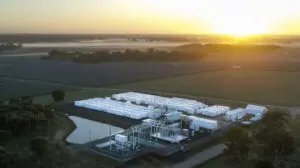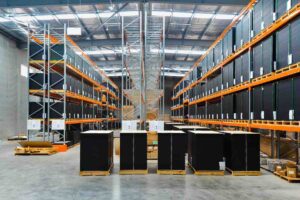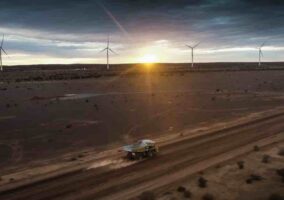Australia will need to build a massive 320GW of new renewable energy generation and storage capacity over the next 25 years to support the decarbonisation of its major industrial supply chains in line with global climate targets, a new series of reports has found.
The reports, released as phase three of the Australian Industry Energy Transitions Initiative’s Pathways to industrial decarbonisation program, focuses on five key supply chains: iron and steel, aluminium, other metals, chemicals, and gas.
These five sectors in isolation are estimated to account for 25 per cent of Australia’s total emissions, while generating more than 17.3 per cent of national GDP and employing around 414,000 people.
The report detailing the most ambitious, 1.5°C-aligned scenario modelled by the ARENA-backed ETI team – led by Climateworks Centre and Climate-KIC Australia with the backing of 18 of Australia’s largest businesses – outlines a pathway to slash industry emissions by 92% by 2050.
According to Australian Industry ETI chair, Simon McKeon, who is also Chancellor of Monash University and a former chair of CSIRO, this – with “high quality and verifiable” offsets for the remaining 8 per cent – would transition industry to net-zero emissions in line with Paris targets.
The transition would have to be underpinned by “a significant step change” in renewable generation and storage, however, including an extra 80GW of large-scale wind, 90GW of large scale solar, another 80GW of rooftop solar, and 70GW of storage capacity by 2050.
The “Coordinated action scenario” pinpoints renewable energy as the critical enabler of rapid industrial decarbonisation, including the build-out of enough new capacity to supply a two-fold increase in Australia’s total current electricity generation to 600 terawatt-hours a year by 2050.

The 170GW of new big solar and wind capacity would also go towards the production of renewable hydrogen, which the reports identify as a significant emissions reduction tool across heavy industry.
Electrification, energy efficiency and biofuels are also listed in the tool kit for rapid decarbonisation, alongside mechanical vapour recompression, which the reports say will play a key role in reducing emissions from the aluminium supply chain.
“This is the biggest change in our economy since the Industrial Revolution, and we can we are undertaking it at much greater speed,” said federal energy minister Chris Bowen at the launch of the reports in Sydney on Monday.
“Australia is very well placed to lead the world in many ways and to give Australians jobs right across our country,” Bowen added. “But we have to be all in to do it.
“Governments; state, federal local. Unions, industry, fintech, universities, multilateral development banks – All in, because this is not a whole-of government effort. This fastest transition since the industrial revolution is, and must, be a whole-of society effort. And I believe we can do it.”
ClimateWorks Centre’s Anna Skarbek says that following this path, over a 30-year period, will need roughly $A20.8 billion a year of investment – around two-thirds going towards the energy system and one-third to industry technologies, electrification and energy efficiency.
That level of investment in existing and emerging technologies puts Australia on track to reduce emissions from these five critical supply chains in line with a 1.5°C warming scenario, the reports say, but only when combined with strong, effective, and coordinated action.
In addition to reducing industrial emissions, these key decarbonisation technologies – such as large-scale hydrogen production and load balancing – could also potentially lead to lower electricity system costs.
And further benefits to the “coordinated action” approach would include the creation of more than 1.3 million jobs between 2025 and 2050, including up to 64,000 construction jobs a year from 2025 to 2050, and 129,000 roles in operations and maintenance between 2025 and 2050.
“This is a moment of opportunity to align and focus efforts to create a globally competitive, equitable, net zero emissions industrial economy in Australia,” says McKeon.
“Action is needed now to lay the foundations, capitalise on the opportunities, and avoid more costly emissions reduction measures in the future.”
Skarbek says the tens of billions of dollars a year of investment required to modernise and thereby decarbonise Australia’s industrial regions and energy systems might seem daunting, but is by no means out of our reach.
“To put this into context, it represents a tenth of the export value of the five supply chains in focus for the Australian Industry ETI – approximately $A236 billion each year – and is comparable to investments made through other major efforts,” she says.
Likewise, CSIRO’s Paul Graham adds that Australia’s renewable energy investment and development market is making a good start on the huge build-out of wind, solar and storage that is required.
“Some [the multi-gigawatt renewable generation developments] are already in advanced stages of planning,’ says Graham, CSIRO’s chief energy economist and a contributor to the report.
“We know we face a significant challenge in reducing emissions from heavy industrial processes, and through this collaboration and vital work, the Australian Industry ETI is showing what is needed to address this imperative,” says ARENA chief Darren Miller.
“Close industry collaboration is essential in these hard-to-abate sectors and the Australian Industry ETI provides a blueprint for how this can be done.
“It’s a testament to what can happen when business, finance, government and the not-for-profit sector come together to tackle this critical problem.”










